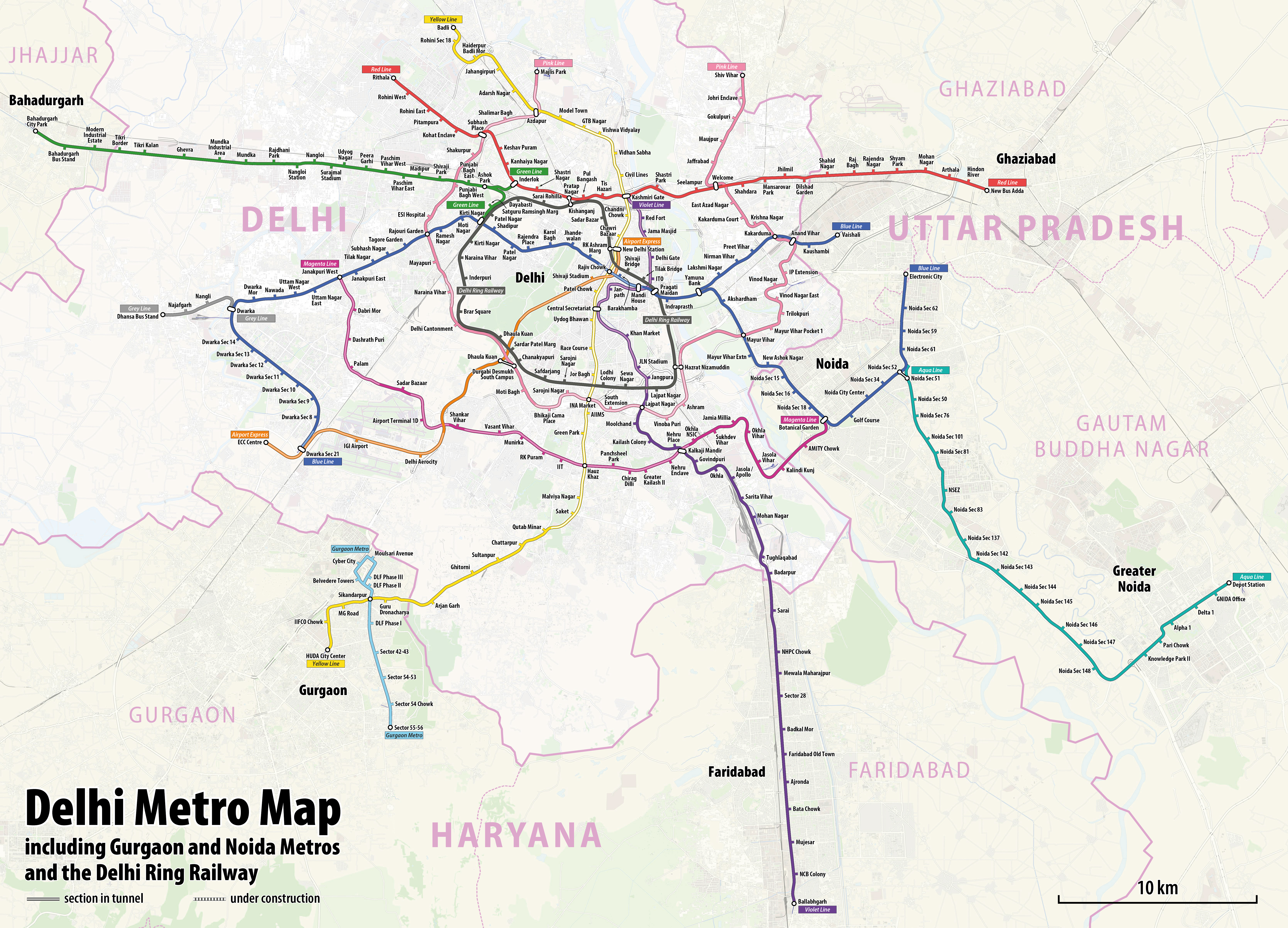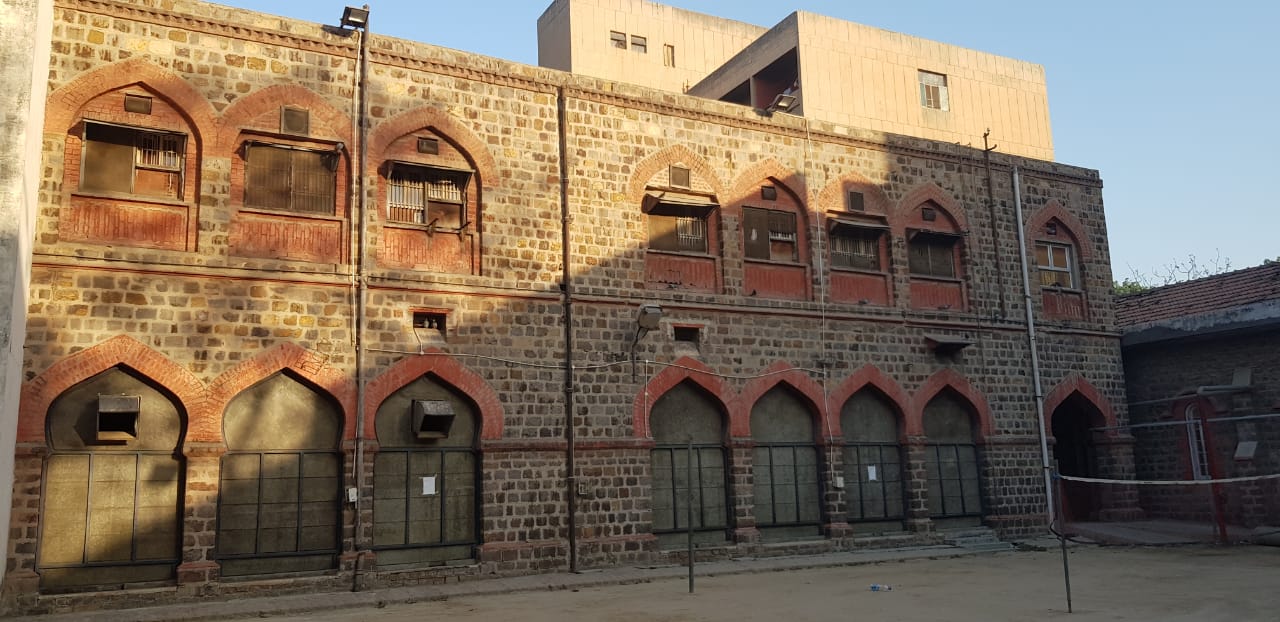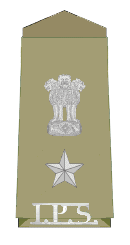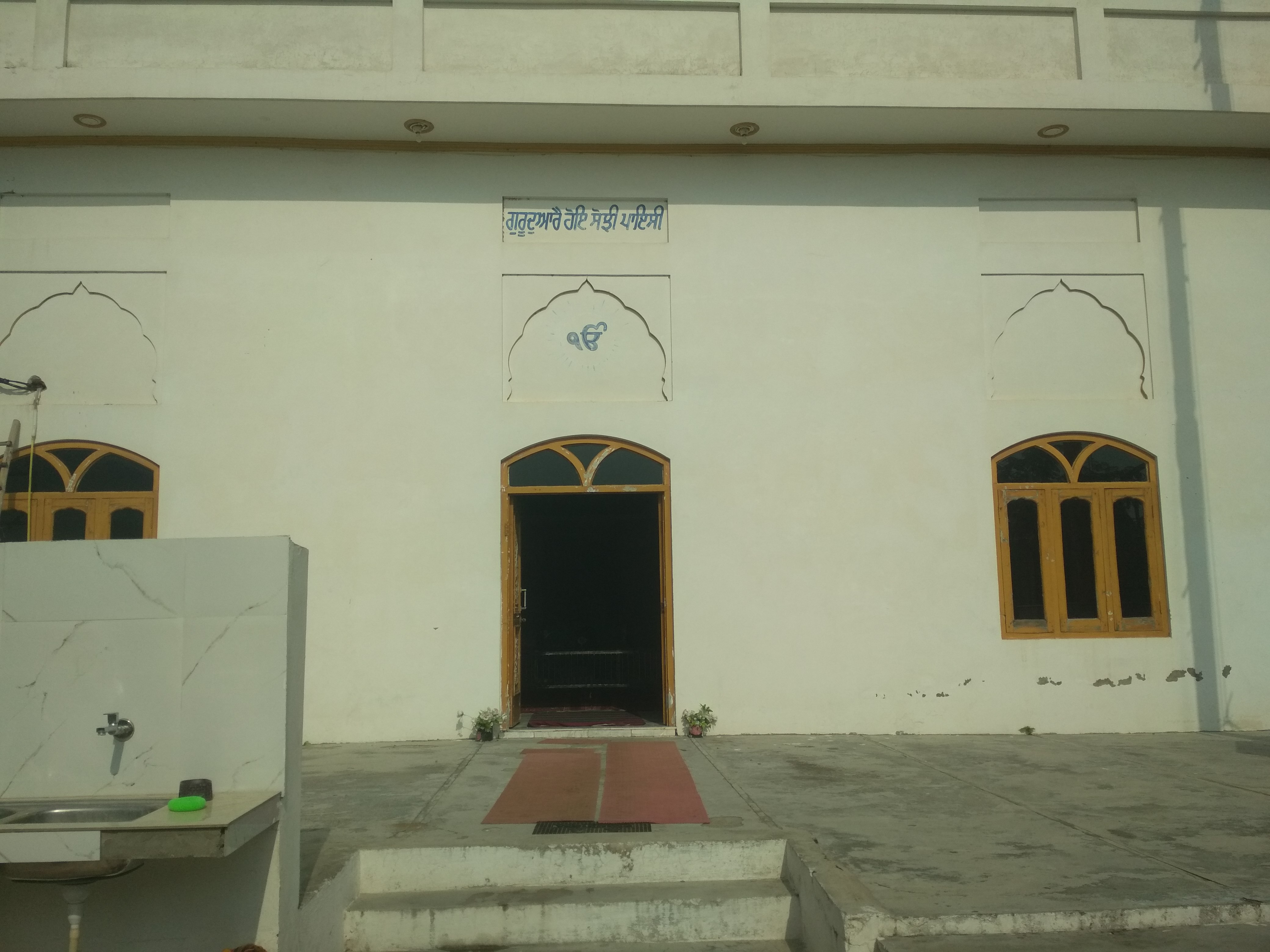|
Tis Hazari
Tis Hazari is a neighbourhood in Old Delhi, India just south of the Northern Ridge. It is the location of the Tis Hazari Courts Complex which was inaugurated on 19 March 1958 by Chief Justice Mr. A. N. Bhandari of the then Punjab High Court. It is one of the six District Courts that function under the Delhi High Court, and continues to be the principal Court building in state of Delhi. History The place gets its name from a force of 30,000 Sikhs, which encamped here under military general Baghel Singh in 1783, prior to Battle of Delhi (1783). Sikhs defeated Mughals in the Battle of Delhi (1783) and captured Red Fort. Under the command of Baghel Singh Dhaliwal and other leading warriors crossed the Yamuna and captured Saharanpur. They overran the territory of Najib ud-Daulah, the Ruhila chief, acquiring from him a tribute of eleven lakh of rupees (INR 1,100,000). In April Baghel Singh Dhaliwal with two other sardars (Rai Singh Bhangi and Tara Singh Ghaiba) crossed the Yamun ... [...More Info...] [...Related Items...] OR: [Wikipedia] [Google] [Baidu] |
Neighbourhoods Of Delhi
Delhi is a vast city and a union territory, and is home to a population of more than 16 million people. It is a microcosm of India and its residents belong to varied ethnic, religious and linguistic groups. As the second-largest city, and the capital of the nation, its 11 List of districts of Delhi, revenue or administrative districts comprise multiple neighbourhoods. The large expanse of the city comprises residential districts that range from poor to affluent, and small and large commercial districts, across its municipal extent. This is a list of major neighbourhoods in the city and only pertains to the National Capital Territory of Delhi. It is not complete, and outlines the various neighbourhoods based on the different districts of the metropolis. North West Delhi *Adarsh Nagar * Ashok Vihar * Begum Pur * Karala, Delhi, Karala * Narela * Pitam Pura * Rohini Sub City * Shalimar Bagh, Delhi, Shalimar Bagh North Delhi * Azadpur * Civil Lines, Delhi, Civil Lines * Gulabi ... [...More Info...] [...Related Items...] OR: [Wikipedia] [Google] [Baidu] |
Delhi High Court
The High Court of Delhi (IAST: ''dillī uchcha nyāyālaya'') was established on 31 October 1966, through the ''Delhi High Court Act, 1966'', with four judges, Chief Justice K. S. Hegde, Justice I. D. Dua, Justice H. R. Khanna and Justice S. K. Kapur. The High Court currently has a sanctioned strength of 45 permanent judges and 15 additional judges. History In 1882, the High Court of Judicature at Lahore was established with jurisdiction over the provinces of Punjab and Delhi. This jurisdiction lasted until 1947 and the Partition of India. The High Courts (Punjab) Order, 1947 established a new High Court for the province of East Punjab with effect from 15 August 1947. The 'India (Adaptation of Existing Indian Laws) Order, 1947' provided that any reference in existing Indian law to the High Court of Judicature at Lahore be replaced by a reference to the High Court of East Punjab. The High Court of East Punjab functioned from the Peterhoff in Shimla until it was moved to Chan ... [...More Info...] [...Related Items...] OR: [Wikipedia] [Google] [Baidu] |
Delhi Metro
The Delhi Metro is a mass rapid transit (MRT) system serving Delhi and its satellite cities of Ghaziabad, Faridabad, Gurgaon, Noida, Bahadurgarh and Ballabhgarh, in the National Capital Region of India. The network consists of 10 colour-coded lines serving 255 stations with a total length of . It is by far the largest and busiest metro rail system in India, and the second oldest after the Kolkata Metro. The system has a mix of underground, at-grade, and elevated stations using both broad-gauge and standard-gauge. Delhi Metro operates over 2,700 trips daily, starting at around 05:00 and ending at 23:30. Construction started in 1998, and the first elevated section ( Shahdara to Tis Hazari) on the Red Line opened on 25 December 2002. The first underground section ( Vishwa Vidyalaya – Kashmere Gate) on the Yellow Line opened on 20 December 2004. The development of the network was divided into phases. Phase I with 3 lines was completed by 2006, and Phase II in 2011. Phase ... [...More Info...] [...Related Items...] OR: [Wikipedia] [Google] [Baidu] |
Red Line (Delhi Metro)
The Red Line (Line 1) is a metro rail line of the Delhi Metro, a rapid transit system in Delhi, India. It is an entirely elevated line and has 29 stations that runs from Rithala to Shaheed Sthal with a total distance of 34.55 km. The Tis Hazari – Shahdara section of this line was the first stretch of the Delhi Metro that was constructed and commissioned. The line connects the areas of Ghaziabad in Uttar Pradesh and the districts of Shahdara, Central Delhi and North West Delhi in Delhi. The Red Line has interchanges with the Yellow Line and Violet line at Kashmere Gate, the Pink Line at Welcome and Netaji Subhash Place, and the Green Line at Inderlok. It is the third most heavily used line of the Delhi Metro network as it acts as a link for those who reside in West Delhi and North West Delhi and travel towards Central Delhi, Shahdara and East Delhi and vice versa. History The Red Line was the first line of the Delhi Metro to be constructed and opened. The Ti ... [...More Info...] [...Related Items...] OR: [Wikipedia] [Google] [Baidu] |
Tis Hazari (Delhi Metro)
The Tis Hazari metro station is a metro station located on the Red Line of Delhi Metro. It is situated in the Tis Hazari area of Central Delhi. The station is situated just across the road from the Tis Hazari Courts Complex, which is the principal district court of Delhi. It is connected to gate number 2 of the complex by a footbridge. The footbridge has a ramp available for the disabled or physically challenged people. History The Tis Hazari metro station was one of the first six metro stations on Delhi Metro's network. The DMRC had begun its commercial operations on December 25, 2002, a day after then prime minister Atal Bihari Vajpayee had inaugurated its first stretch spanning 8.2 kilometres from Shahdara to Tis Hazari on the Red Line. Station layout Facilities Toilets: The station has a Sulabh toilet located near gate no. 3. Exits Connections Bus DTC bus routes number 17, 88, 102, 106, 107, 109, 114, 115, 116, 117, 119, 123, 124, 125, 125EXT, 126, 127, 128, ... [...More Info...] [...Related Items...] OR: [Wikipedia] [Google] [Baidu] |
St Stephen's Hospital, Delhi
St Stephen's Hospital Delhi is one of the oldest and the largest private hospitals in New Delhi, India. The hospital today has 600 beds and is presently a superspeciality tertiary care hospital offering comprehensive care covering all major clinical specialities and most super-specialities. The institution started as a dispensary in 1876 by the Delhi Female Medical Mission, on the banks of river Yamuna. The hospital was later established in 1885 as a small facility with 50 beds in Chandni Chowk and opened by Lady Dufferin, Vicereine of India. It was the first hospital for women and children. Education St. Stephen's Hospital was the first one to begin training the Indian women as nurses in 1867. The training School for nurses was started under Alice Wilkinson—the first trained British nurse who joined the hospital in 1908. Wilkinson became the hospital's nursing superintendent. She also founded the Trained Nurse's Association of India and worked as its secretary until ... [...More Info...] [...Related Items...] OR: [Wikipedia] [Google] [Baidu] |
Superintendent Of Police (India)
Police ranks of India Superintendent of police (SP) is a senior rank in the Indian Police Service (IPS). They wear a star and an Ashoka emblem on their epaulettes with 'IPS' below. The larger and more important districts in India are headed by a senior superintendent of police (SSP), while smaller district are headed by a superintendent of police (SP). Below SP, there are additional superintendent of police (Additional SP) and deputy superintendent of police (DySP/DSP). A DySP who is in-charge of a sub-division is also called Sub-divisional police officer (SDPO). In the state of Kerala Kerala ( ; ) is a state on the Malabar Coast of India. It was formed on 1 November 1956, following the passage of the States Reorganisation Act, by combining Malayalam-speaking regions of the erstwhile regions of Cochin, Malabar, South ..., superintendents of police in charge of police districts are called District Police Chiefs. Commissionerate system {{See also, Commissioner of ... [...More Info...] [...Related Items...] OR: [Wikipedia] [Google] [Baidu] |
West Delhi
West Delhi is one of the 11 administrative districts of the National Capital Territory of Delhi in India. Administratively, the district is divided into three subdivisions, Patel Nagar, Rajouri Garden and Punjabi Bagh. West Delhi is bound by the districts of North West Delhi to the north, North Delhi and Central Delhi to the east, South West Delhi to the south, and Jhajjar District of Haryana state to the west. Major residential and commercial areas of Delhi like Janakpuri and Tilak Nagar are located in West Delhi. West Delhi has an area of 129 km², with a population density of nearly 14,000 persons per km². The population of 2,543,243 consists of 1,356,240 males and 1,187,003 females. Children between 0–6 years are 203,528 consisting of 109,526 boys and 94,002 girls. The literacy rate is above 70% at a total of 1,301,252 of which 739,572 are males and 561,680 females. Demographics According to the 2011 census West Delhi has a population of 2,543,243, roughly equal t ... [...More Info...] [...Related Items...] OR: [Wikipedia] [Google] [Baidu] |
Central Delhi
Central Delhi is an administrative district of the National Capital Territory of Delhi in India. It is bounded by the Yamuna River on the east and by the districts of North Delhi to the north, West Delhi and South West Delhi to the west, New Delhi to the south, and East Delhi to the east across the Yamuna. Administratively, the district is divided into three subdivisions, Civil Lines, Karol Bagh, and Kotwali, Delhi. Central Delhi has a population of 582,320 (2011 census), and an area of , with a population density of . Central Delhi business district and high rises. It includes Shahjahanabad (Old Delhi), which served as the capital of the Mughal Empire, and is home to the monuments like the Delhi Fort and the Jama Masjid, Delhi's principal mosque. Demographics According to the 2011 census Central Delhi has a population of 582,320, roughly equal to the nation of Solomon Islands or the US state of Wyoming. This gives it a ranking of 531st in India (out of a total of 640). The d ... [...More Info...] [...Related Items...] OR: [Wikipedia] [Google] [Baidu] |
Saharanpur
Saharanpur is a city and a municipal corporation in Uttar Pradesh, India. It is also the administrative headquarters of Saharanpur district. Saharanpur city's name was given after the Saint Shah Haroon Chishti. Saharanpur is declared as one amongst the 100 Smart Cities by MOUD as a part of Smart Cities Mission of the Government of India. Geography and climate Saharanpur is located at , about south-southeast of Chandigarh, north-northeast of Delhi, north-northeast of Shamli and about south-west of Dehradun. It has an average elevation of . Saharanpur is a part of a geographical doab region. Saharanpur district join four states together Himachal Pradesh, Uttar Pradesh, Uttarakhand and Haryana. Demographics According to the 2011 Indian census, Saharanpur had a population of 705,478, 12.5% of whom were under the age of six, living in 129,856 households within the municipal corporation limits. The city is spread over an area of and with a population density of , is t ... [...More Info...] [...Related Items...] OR: [Wikipedia] [Google] [Baidu] |
Battle Of Delhi (1783)
The Battle of Delhi was fought between Khalsa Sikhs and the Mughal Empire in 1783. Background and battle The Sikhs under Baghel Singh, leader of the Karorsinghia Misl, began raiding and plundering the outskirts of Delhi in 1764. In April 1782, Najaf Khan hitherto the highest commander of the Mughal army died, after which a power struggle ensued allowing the Sikhs to capture Delhi. The Sikhs reappeared in Delhi and plundered its environs and laid waste the country up to Khujra. Some of the Sikhs having ravaged the Gangetic Doab contemplated approaching Ruhilkhand, though they were deterred by the arrival of the Nawab of Oudh's forces as well as some English battalions to the area, forcing them to concentrate solely on the Doab. Some of the rajas reigning over areas dominated by the Sikhs agreed to pay tribute to them. The main body of the Sikhs having plundered Aligarh and Buland Shahar proceeded towards Delhi where they further set Malka Ganj and Sabzi Mandi on fire. They m ... [...More Info...] [...Related Items...] OR: [Wikipedia] [Google] [Baidu] |
Baghel Singh
Baba Baghel Singh (c. 1730 – c. 1802) was a military general in the Punjab region in the northern part of the Indian subcontinent in the 18th century. He rose to prominence in the area around Sutlej and Yamuna. Singh joined the Singh Krora Misl, one of the misls during Sikh Confederacy. In 1765, Singh became the leader of the misl. Early life Baghel Singh was born in village Jhabal Kalan, Amritsar District of Punjab around 1730s into a Dhaliwal Jat family. He was the descendant of Chaudhary Bhai Langaha , the Sikh chief of 84 villages in the Majha, who along with his younger brother Bhai Pero Shah the grandfather of the famous Mai Bhago, had converted to Sikhism, during the time of Guru Arjan Dev Ji, in the 1580s. From humble beginnings he arose to become a formidable force in the area between River Sutlej and River Yamuna. He aligned himself with Karor Singhia misl led by Sardar Karora Singh. After the early demise of Karora Singh, Bhai Baghel Singh succeeded as a ... [...More Info...] [...Related Items...] OR: [Wikipedia] [Google] [Baidu] |


.png)




